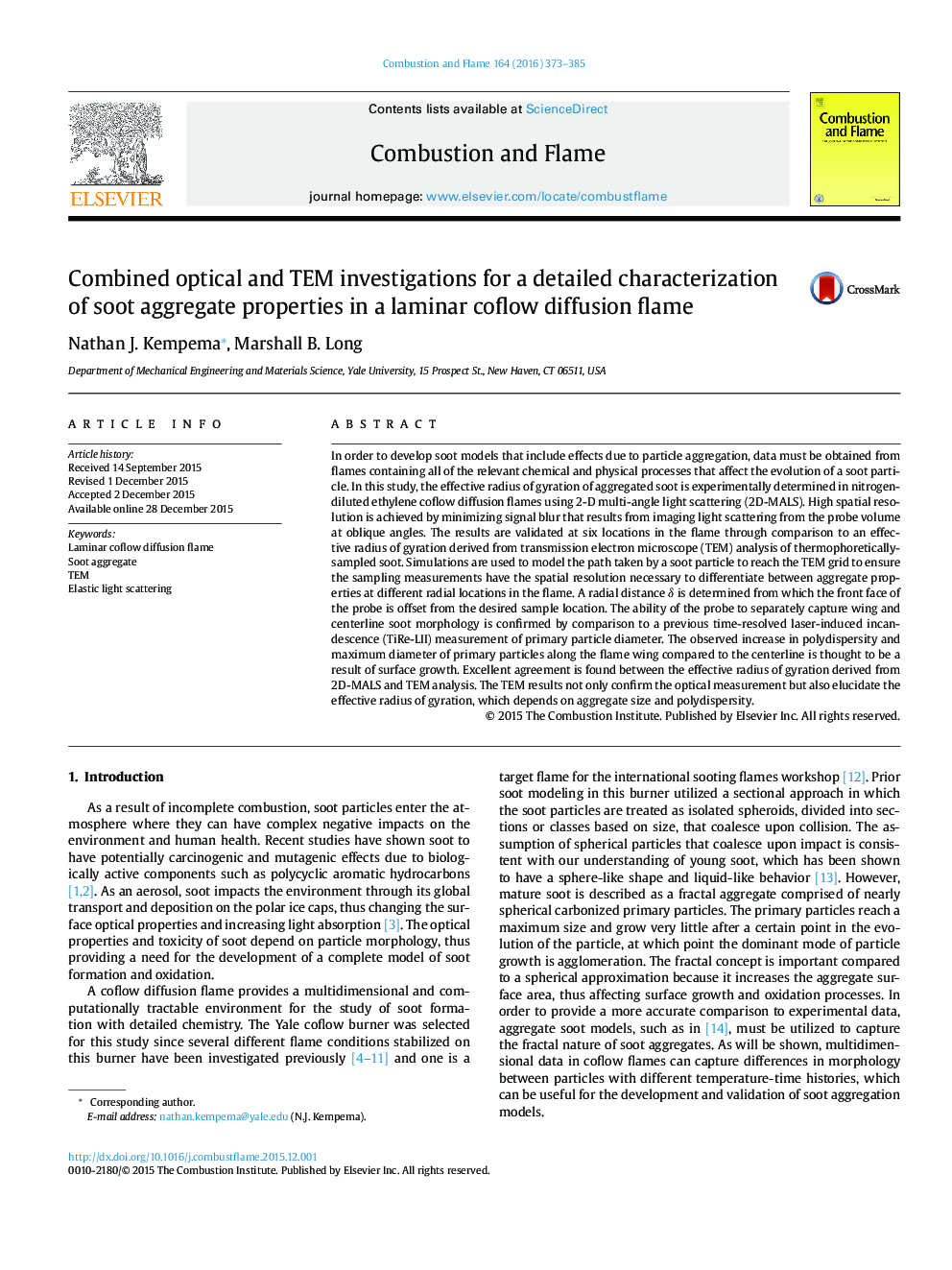| Article ID | Journal | Published Year | Pages | File Type |
|---|---|---|---|---|
| 6594330 | Combustion and Flame | 2016 | 13 Pages |
Abstract
In order to develop soot models that include effects due to particle aggregation, data must be obtained from flames containing all of the relevant chemical and physical processes that affect the evolution of a soot particle. In this study, the effective radius of gyration of aggregated soot is experimentally determined in nitrogen-diluted ethylene coflow diffusion flames using 2-D multi-angle light scattering (2D-MALS). High spatial resolution is achieved by minimizing signal blur that results from imaging light scattering from the probe volume at oblique angles. The results are validated at six locations in the flame through comparison to an effective radius of gyration derived from transmission electron microscope (TEM) analysis of thermophoretically-sampled soot. Simulations are used to model the path taken by a soot particle to reach the TEM grid to ensure the sampling measurements have the spatial resolution necessary to differentiate between aggregate properties at different radial locations in the flame. A radial distance δ is determined from which the front face of the probe is offset from the desired sample location. The ability of the probe to separately capture wing and centerline soot morphology is confirmed by comparison to a previous time-resolved laser-induced incandescence (TiRe-LII) measurement of primary particle diameter. The observed increase in polydispersity and maximum diameter of primary particles along the flame wing compared to the centerline is thought to be a result of surface growth. Excellent agreement is found between the effective radius of gyration derived from 2D-MALS and TEM analysis. The TEM results not only confirm the optical measurement but also elucidate the effective radius of gyration, which depends on aggregate size and polydispersity.
Related Topics
Physical Sciences and Engineering
Chemical Engineering
Chemical Engineering (General)
Authors
Nathan J. Kempema, Marshall B. Long,
